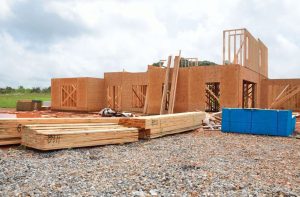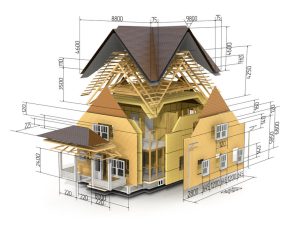What is the Most Expensive Part of Building a House?
Introduction
Building a house is a significant undertaking that requires careful planning and budgeting. There are several factors to consider when determining the cost of constructing a new home, including materials, labor, permits, and other miscellaneous expenses. However, some aspects of the building process tend to be more expensive than others. In this article, we will explore the most expensive part of building a house and delve into the factors that contribute to its high cost.
The Foundation: A Solid Start
The Importance of a Strong Foundation
When it comes to constructing a house, the foundation is the most critical component. It provides support and stability to the entire structure, ensuring its longevity and durability. Consequently, the foundation is often one of the most expensive parts of building a house. The cost of the foundation is determined by several factors, including the size of the house, the type of foundation, and the soil conditions.
Factors Influencing Foundation Costs
The size of the house is a significant factor in determining the cost of the foundation. Larger homes require more extensive foundations to support the added weight and structural complexity. Additionally, the type of foundation chosen also affects the cost. There are various foundation types, such as slab-on-grade, crawl space, and basement, each with its own cost implications. For example, a basement foundation tends to be more expensive due to excavation and additional waterproofing requirements.
Another crucial consideration is the soil conditions on the construction site. Some soil types, such as expansive clay or soft soil, may require special engineering techniques to ensure the stability of the foundation. These techniques, such as soil stabilization or deep foundation systems, can significantly increase the cost of the foundation.

The Roof: Protection and Aesthetics
The Role of a Well-Constructed Roof
The roof serves as the first line of defense against the elements, protecting the house and its occupants from rain, wind, and other weather conditions. A well-constructed roof not only provides functional benefits but also contributes to the overall aesthetics of the house. Due to its importance and complexity, the roof is another expensive component of building a house.
Factors Affecting Roofing Costs
Several factors influence the cost of roofing. The size and complexity of the roof design play a significant role. A roof with multiple peaks, dormers, or intricate architectural features requires more labor and materials, leading to higher costs. Additionally, the choice of roofing materials affects the overall expense. Options range from asphalt shingles, which are more affordable, to high-end materials like slate or metal, which can be considerably more expensive.
The climate in which the house is located also impacts roofing costs. Regions prone to severe weather conditions, such as hurricanes or heavy snowfall, may require additional reinforcements or specialized roofing materials, further increasing the cost.
The Interior: Comfort and Style
Investing in Quality Interiors
While the foundation and roof are critical, the interior of a house is where homeowners spend most of their time. Aspects such as flooring, cabinetry, plumbing, and electrical work contribute to the overall cost of building a house. The level of finishes and materials chosen can significantly impact the final expense.
Factors Influencing Interior Costs
The size of the house is a primary factor in determining interior costs. More square footage means more flooring, more cabinets, and more fixtures, resulting in higher expenses. The level of finishes also plays a significant role. High-end finishes, such as hardwood flooring or custom cabinetry, can substantially increase costs compared to more budget-friendly options like laminate flooring or stock cabinets.
Additionally, the complexity of the interior design and layout can affect costs. Intricate architectural details, custom-built features, and unique design elements require skilled labor and specialized materials, adding to the overall expense. Plumbing and electrical work also contribute to the cost of the interior. The number of bathrooms, kitchen appliances, and lighting fixtures all impact the final price.
Furthermore, the choice of fixtures and appliances can significantly influence the cost. High-end brands and energy-efficient options tend to be more expensive upfront but may offer long-term savings in terms of energy consumption and maintenance.
Other Factors to Consider
Location and Permitting
The location of the house can have a significant impact on construction costs. Factors such as site accessibility, local building codes, and permitting requirements vary from one area to another. Some regions may have stricter regulations or require additional permits, leading to higher costs.

Architectural Design
The architectural design of a house can also affect its overall cost. Unique or unconventional designs often require specialized expertise and custom materials, driving up expenses. Additionally, features like large windows, open floor plans, or multi-story structures can add complexity to the construction process, resulting in increased costs. For Nazbuild building see here.
Market Conditions
Market conditions can influence the cost of building a house. Fluctuations in the prices of construction materials, such as lumber, concrete, or steel, can impact the overall budget. Labor costs may also vary depending on supply and demand dynamics in the construction industry.
Conclusion
When it comes to building a house, several factors contribute to its overall cost. While the foundation, roof, and interior are often the most expensive parts, it’s important to consider various aspects, such as location, architectural design, and market conditions, which can significantly impact the budget. Proper planning, thorough research, and working closely with architects, contractors, and suppliers can help homeowners make informed decisions and manage costs effectively. By understanding the factors that influence expenses, individuals can embark on their home-building journey with confidence, ensuring a successful and financially viable project.

